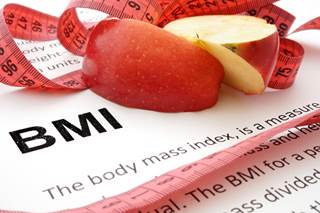Higher BMI in Early Adulthood Linked to Sudden Cardiac Death in Women
 Women with higher BMIs in early adulthood may be more likely to experience sudden cardiac death.
Women with higher BMIs in early adulthood may be more likely to experience sudden cardiac death.
Higher body mass index (BMI) assessed in early adulthood was associated with higher risk of sudden cardiac death (SCD), according to research published in the Journal of the American College of Cardiology: Clinical Electrophysiology.
Obesity, defined as a BMI ≥30 kg/m2, is associated with a greater risk of coronary heart disease (CHD) and is a major risk factor for SCD, but a definitive link between BMI and SCD has not been firmly established.
Researchers evaluated 72 484 women who were free from chronic disease from the Nurses' Health Study (NHS). Initially, the NHS mailed questionnaires about demographics, lifestyle, and medical history to more than 121 000 female nurses. Follow-up questionnaires have been administered biennially for updates over a 32-year period. Diet was assessed with a semi-quantitative food frequency questionnaire, beginning in 1980.
The primary end point was SCD and the secondary end points were fatal CHD and nonfatal myocardial infarction (MI). Separate analyses were performed for SCD and CHD end points, adjusting for factors such as age, calendar time, smoking, physical activity, alcohol, total energy intake, and family history of MI.
BMI was assessed using the following categories: referent (18.5-20.9; 21.0-22.9), overweight (23.0-24.9; 25.0-29.9),class I obese (30.0-34.9), and class II obese (≥35.0).
During follow-up, the prevalence of overweight and obesity increased. At age 18, 11% of women had a BMI 25, and this proportion increased to 37% in 1980 (mean age, 46 years) and 59% in 2010 (mean age, 75 years).
Women with higher BMIs were older and more likely to have diabetes, hypertension, hypercholesterolemia, and a family history of CHD. Over the course of the study, 445 SCD, 1286 fatal CHD, and 2272 non-fatal MI cases occurred.
After adjusting for confounders, higher BMI was associated with greater risk of SCD (P, linear trend: <.001). Women with a BMI of 25.0 to 29.9, 30.0 to 34.9, or ≥35.0 had significantly higher risk of SCD within the next 2 years compared with women with a BMI of 21.0 to 22.9.
Obesity, defined as a BMI ≥30 kg/m2, is associated with a greater risk of coronary heart disease (CHD) and is a major risk factor for SCD, but a definitive link between BMI and SCD has not been firmly established.
Researchers evaluated 72 484 women who were free from chronic disease from the Nurses' Health Study (NHS). Initially, the NHS mailed questionnaires about demographics, lifestyle, and medical history to more than 121 000 female nurses. Follow-up questionnaires have been administered biennially for updates over a 32-year period. Diet was assessed with a semi-quantitative food frequency questionnaire, beginning in 1980.
The primary end point was SCD and the secondary end points were fatal CHD and nonfatal myocardial infarction (MI). Separate analyses were performed for SCD and CHD end points, adjusting for factors such as age, calendar time, smoking, physical activity, alcohol, total energy intake, and family history of MI.
BMI was assessed using the following categories: referent (18.5-20.9; 21.0-22.9), overweight (23.0-24.9; 25.0-29.9),class I obese (30.0-34.9), and class II obese (≥35.0).
During follow-up, the prevalence of overweight and obesity increased. At age 18, 11% of women had a BMI 25, and this proportion increased to 37% in 1980 (mean age, 46 years) and 59% in 2010 (mean age, 75 years).
Women with higher BMIs were older and more likely to have diabetes, hypertension, hypercholesterolemia, and a family history of CHD. Over the course of the study, 445 SCD, 1286 fatal CHD, and 2272 non-fatal MI cases occurred.
After adjusting for confounders, higher BMI was associated with greater risk of SCD (P, linear trend: <.001). Women with a BMI of 25.0 to 29.9, 30.0 to 34.9, or ≥35.0 had significantly higher risk of SCD within the next 2 years compared with women with a BMI of 21.0 to 22.9.
Women with a lower BMI (18.5-20.9) also had an elevated risk of SCD, but the J-shaped relation was not statistically significant (P, quadratic trend: .13).
In analyses stratified by prior CHD diagnosis, the elevated risk associated with obesity was significant only among women without a history of diagnosed CHD. The relative risk for SCD was 1.62 for BMIs between 30.0 and 34.9 and 2.19 for BMI ≥35 compared with BMIs between 21.0 and 22.9.
Women with a higher BMI at baseline had a greater risk of SCD (P<.001) and an elevated BMI at age 18 was also associated with risk of SCD (P<.001), particularly for women with a BMI ≥30.
Furthermore, weight gain in early to mid-adulthood (age 18 to baseline; average, 27 years) was associated with risk of SCD, independent of BMI at age 18 (P, linear trend <.001).
“These findings suggest that the timing of BMI assessment plays a critical role in determining its relation to SCD risk,” the authors noted. “… Obesity may be a stronger risk factor for SCD in middle-aged versus older populations.”
In analyses stratified by prior CHD diagnosis, the elevated risk associated with obesity was significant only among women without a history of diagnosed CHD. The relative risk for SCD was 1.62 for BMIs between 30.0 and 34.9 and 2.19 for BMI ≥35 compared with BMIs between 21.0 and 22.9.
Women with a higher BMI at baseline had a greater risk of SCD (P<.001) and an elevated BMI at age 18 was also associated with risk of SCD (P<.001), particularly for women with a BMI ≥30.
Furthermore, weight gain in early to mid-adulthood (age 18 to baseline; average, 27 years) was associated with risk of SCD, independent of BMI at age 18 (P, linear trend <.001).
“These findings suggest that the timing of BMI assessment plays a critical role in determining its relation to SCD risk,” the authors noted. “… Obesity may be a stronger risk factor for SCD in middle-aged versus older populations.”




